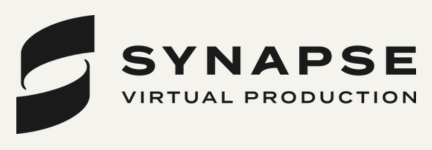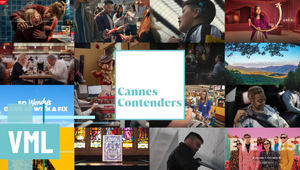
Slower, More Connected and More Human: What VML’s Future 100 Offers Brands

It’s 2024, so it won’t surprise anyone that VML’s Future 100 UK event yesterday began with an address from an AI-generated version of VML UK chief executive officer Pip Hulbert. Although pretty much a necessity at this moment, the utterly convincing quality of the virtual Pip, as she handed “over to the other Pip”, was an opportunity to see just how far these technologies have come in a short space of time.
The real Pip admitted that it was so convincing that she found it “quite unnerving” and that even her family agreed it could have been her. It seems deep fakes have traversed the uncanny valley.
Although generative AI had to be addressed, the VML Future 100 trend report spanned much more territory than just the most obvious hype topics of recent months. London’s Sea Containers House played host to the first official outing as VML with an introduction to the newly formed business, guests got a curated run-through of the Top 100 trends and a chance to connect and meet the VML team over a celebratory drink at its VML launch party overlooking the Thames.
As global director of VML Intelligence Marie Stafford took to the auditorium stage (helpfully confirming that she was human, not an AI) she noted that this report marks the 10th anniversary of the Future 100. She pointed out that very first “guide to the year ahead” from the agency (then J. Walter Thompson) predicted the demise of the cookie. so, any brand that took steps on that back in 2015 must be feeling pretty vindicated. To VML, the Future 100 is: “The things we think that clients need to watch that offer opportunities for growth in the year ahead and beyond,” she said.
Marie’s session then skimmed through a small selection of the 100 trends, grouping them into three macro themes: ‘The Great Deceleration’, ‘Radical Reconnection’ and ‘Rehuman’

The Great Deceleration
Marie described this group of trends as driven by “an appetite to slow down, to take the foot off the gas.” With stress, burnout and poor work-life balance playing a depressingly defining role in today’s world, people are asking, “Is there a better way?” She asserted that the ‘polycrisis’ which featured in 2023’s Future 100 hasn’t exactly disappeared and it can’t be unrelated that the report’s survey of 9,000 respondents revealed stress and mental illness as the top two challenges for human health.
‘Idyllic idleness’ (83) is one trend within this theme. In today’s world, it’s become a “radical thing to stop and do nothing,” said Marie. Brands have opportunities to play a part in this, such as wellness practices who are introducing doing nothing as a healing experience, or retail spaces providing quiet rooms for customers to escape the frenzy of consumerism for as long as they need to. Marie then invited the audience – mostly VML client brands – to “take a moment of pure idleness” with an eye mask on while the “most relaxing piece of music ever composed” played.
Wellness and ambition used to be in opposition, but the ‘well ambition’ trend (84) flips this, observing that wellness is increasingly an ambition of its own. Work seems to have “wrapped its tentacles around us and won’t let go,” said Marie, before showing the viral TikTok by Brielleybelly, the 2023 graduate who famously shared her problems with the average nine-to-five lifestyle. Some in the audience laughed at her complaints that she didn’t get home until 6:15pm, but Marie countered: “Don’t we think she’s got just a glimmer of a point?” A lot of people feel like her, it seems. 56% of people often feel burned out by work and 8 out of 10 people think that brands should be doing something about mental health, highlighted VML Intelligence’s global director.
We all know that tech is impacting our wellbeing too, which is why ‘Luddite mode’ (8) is a trend brands should consider in 2024 – a mentality where “we can slip in and out of being switched on and switched off, all in service of getting a better balance in our lives,” said Marie. She pointed to the rise in people buying ‘dumb phones’, which take away the temptation to doom scroll and the strong uptick in people taking up analogue hobbies.
Maybe all of these trends will be relevant for 2025 too, because ‘decelerating hype cycles’ (6) is one more Future 100 trend that reflects more rejection of the pace of what’s in and what’s out. The products you buy may also be relevant for years to come, as ‘slow beauty’ (53) takes hold in luxury brands as they dial back the speed of trends in favour of more sustainable, lasting products. Marie mentioned Stella McCartney, Hermes and lasting skincare brand Dieux as north stars for this trend.
While the return to travel after covid-19 has been heartening for many businesses, ‘transcendent travel’ (95) is a trend that shows the new flavour that the sector has taken on in reaction to today’s pace of life. Marie turned to Tom Marchant, owner and co-founder of Black Tomato to explain on a video how his company helps travellers to savour the moment of travel, often by eschewing the tick-box adventuring style of seeing sights of the world in favour of spending more meaningful time immersed for longer in a place and culture, finding connection to a place and the people you travel there with.
Radical Reconnection
The second macro-theme to lump some of the 100 trends into is ‘Radical Reconnection’, which Marie called the “opportunity to drive togetherness and community” that is now so prominent for brands. “We need each other,” she said, recognising that it “seems more and more there are barriers to it” and that while we are “still struggling with some of the after-effects of social isolation we went through [in the pandemic]”, loneliness is frequently being pointed to as a new epidemic.
That’s what ‘prosocial effervescence’ (5) responds to. This is the feeling of belonging and “even dare I say transcendence,” said Marie, that we get when we’re together with people with a shared sense of purpose. A case in point is Taylor Swift’s phenomenal Eras Tours, which caused seismic events through the coming together of Swifties. Marie reminded us of how many people dressed in pink to go and see ‘Barbie’ last summer, how businesses in India are popping up to allow people to buy their way into weddings, or how IKEA hosted raves at Milan Design Week. Togetherness is at a premium in 2024.
‘Intentional communities’ (10) provide further evidence for this. With the urban cacophony holding less allure than it has for a long time, Marie told the audience that more and more people are “opting out of urban anonymity” and building new collectives who live together and equitable and sustainable models, such as
Honeydew, the eco-community in Maiolo, Italy or the growing trend In the US of ‘mommunes’, where single mothers and their children share a home.
Coming together over food isn’t quite a trend. It’s easy to argue that it’s never gone away, but 'relational dining' (48) recognises the return in supper clubs and events centred around sharing a meal. “Food is a really powerful route to community,” said Marie, which any brand related to eating could do well to remember.
With people searching for togetherness, ‘community-centric retail’ (63) is another answer. While shopping malls and high streets around the world have been struggling with footfall after the ecommerce boom, developers who’ve supported independent traders are finding it to be a shortcut to a sense of community. In Poole, in the UK Kingland Crescent, a once rundown shopping street, is now home to 10 thriving independent local retailers, including a record store, a coffee roaster, a fishmonger, and a jewellery store.
Everyone’s seen Apple’s new Vision Pro goggles as part of the hype cycle, so it’s clear that ‘spatial tech’ (12) is a must-watch trend for 2024. But this too is about radical reconnection, because its allure lies in how the tech allows the real world to remain part of a digital experience. It’s “about navigating a 3D space in technology,” said Marie. “You don’t lose sight of reality. You’re still connected.” And while hologram devices emerge, “effectively teleporting yourself to anybody in the world,” tech such as Holoconnects and the HEXR glove are focusing on connection and touch, allowing us to reach out and touch the rest of the world, defying geography.
Togetherness and community are moving into a more central space in many creative brand sectors, such as beauty products. The Future 100 predicts that ‘co-creative futures’ (39) will play a big role this year, with brands such as web3 beauty startup Kiki, which only makes products once its community has decided it wants it, or Angelina Jolie’s Atelier Jolie, where she collaborates with customers to co-create products.
'Emotioneering' (01) is one of the more creatively named trends in the report. As an appetite from consumers grows for more intense emotional experiences, Marie highlighted the opportunity to design emotional payback into brand experiences. “Crucially [consumers] are open to more brands delivering that,” she said. Joy has been the focus of advertising for some time, but other emotions such as “awe, surprise, magic, even recreational fear are ‘prosocial’ emotions,” she said. And this has been proven to “Effectively, emotions prime us for connection.”
Rehuman
Finally it was time to mention “the tiny topic of what it means to be human in the age of ubiquitous AI,” quipped Marie. Technology is starting to challenge our traditional notions of what it means to be human, she suggested. So many of the trends in the Future 100 offer answers to the question: “How do we distinguish ourselves from technology?”
The ‘identity economy’ (11) is one answer – an emerging market in which tools to create your own doppelganger allow us to delegate work to our digital clones, speak to people we’re unable to communicate with and boost our productivity. As virtual CEO Pip Hulbert demonstrated, deep fake tech has got powerful and it’s much more accessible too, noted Marie. Livestreamers can afford them now, which enables them to “churn content, and to earn from that content 24 hours a day,” she said. But this isn’t without risk, as streamer Calvin Chen found when he got his AI self to eat noodles on stream for 24 hours. Even though he was upfront about what he was doing, he lost 7,000 followers.
‘Aldentities’ (97) is a trend that suggests that as artificial intelligences become part of our society, the things that unite humans may begin to bind us closer together. In a world of culture wars, the artificial may serve as a new other to bring humanity closer together. “Maybe we won’t see those differences quite as starkly,” hopes Marie.
AI will begin to profoundly alter how people grow up, as ‘generation AI’ (93) grows up alongside non-human personalities. The youngest alphas are playing with AI toys already, such as the Moxie companion robot or Teddy GPT. Our children will have both human and artificial relationships as they grow up, and the global director of VML IntelligenceMarie suggested we might need to accept that.
AI is only getting smarter, Marie reminded us, which is why ‘mimetic AI’ (99) represents the next phase in how we use it. It won’t be about us issuing commands and getting an answer, but issuing a sequence of actions for it to carry out, with less micromanagement. Rabbit R1 is a personal AI that learns how to use all your apps, so you can tell it how to use them in combination to, for example, book a holiday or plan a birthday party.
Technology isn’t just digital. Biological progress is worth engaging with too, noted Marie. ‘Ultrapreservation’ (91), such as Colossal Biosciences looking to “de-extinct” the woolly mammoth, is taking off, while it’s worth paying attention to ‘synthetic biology’ (94), where some remarkable breakthroughs are taking place, such as scientists growing whole models of human embryos, without sperm or egg, as the BBC reported in September 2023.
One theme to tie all of this techy hype together felt appropriate though. To remind the audience that VML is a creative agency ‘collective recharge’ (2) is an impetus that Marie tied to Pantone’s Colour of the Year 2024 – ‘Peach Fuzz’. Finishing on a moment of abstraction, she suggested that the colour reflects values that are worth focusing on in the year ahead: Gentleness, togetherness, a slower pace and more human-centric way of being.















